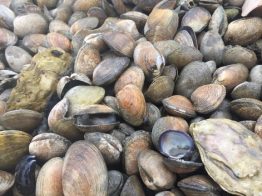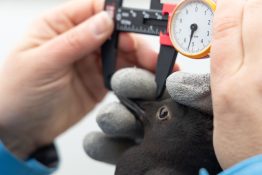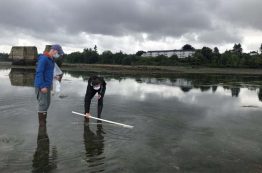Around 50 years ago, Pacific oysters in the Puget Sound started dying at noticeably increasing rates during the summer, causing residents and scientists to wonder why. Researchers in what is now the School of Aquatic and Fishery Sciences investigated many factors that may cause mortalities such as bacteria, reproductive stress related to spawning and changes in other environmental conditions. The evidence collected pointed towards stress on the animals when they spawn, as the Pacific oyster spends a lot of their energy on reproduction.
Read more »How computer models and statistics are shaping modern ecology
When we think of wildlife ecologists, we might envision researchers traipsing through meadows, fording rivers, and tracking elusive predators on daring field expeditions. While some of these images may be accurate, those who work in quantitative ecology and conservation know that some of the most groundbreaking and essential ecological research takes place behind the computer screen, using statistics, mapping, and mathematical models.
Read more »New study: 2021 heat wave created ‘perfect storm’ for shellfish die-off
It’s hard to forget the excruciating heat that blanketed the Pacific Northwest in late June 2021. Temperatures in Oregon, Washington and British Columbia soared to well above 100 degrees Fahrenheit, with Seattle setting an all-time heat record of 108 degrees on June 28. During the heat wave, also called a heat dome, scientists and community members alike noticed a disturbing uptick of dying and dead shellfish on some beaches in Washington and British Columbia, both in the Salish Sea and along the outer coast.
Read more at UW News »Scientists seek to grow the field of eDNA research ‘without squelching creativity’
A new effort at the University of Washington aims to accelerate eDNA research by supporting existing projects and building a network of practitioners to advance the nascent field. Called the eDNA Collaborative, the team is based in the College of the Environment with leadership and program staff from the School of Marine and Environmental Affairs. For about a decade, scientists have honed the craft of using genetic material in the environment — known as eDNA — to detect and monitor organisms for environmental science and conservation.
Read more at UW News »eDNA a useful tool for early detection of invasive green crab
European green crabs feast on shellfish, destroy marsh habitats by burrowing in the mud and obliterate valuable seagrass beds. The invasive species also reproduces quickly, making it a nightmare for wildlife managers seeking to control its spread in Washington’s marine waters. Last month, Gov. Jay Inslee issued an emergency order in response to more than 70,000 crabs caught on Lummi Nation land as well as dramatic increases in crab populations on Washington’s outer coast and other locations in Puget Sound in recent years.
Read more at UW News »





